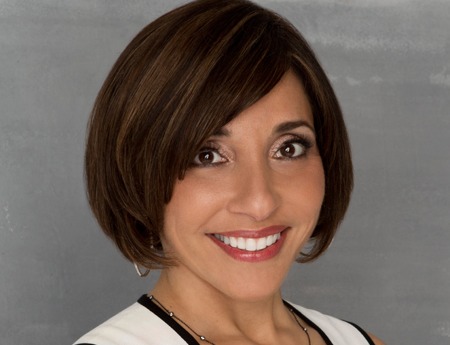CES 2016: Yaccarino Blasts TV Measurement

Complete Coverage: CES 2016
Linda Yaccarino, chairman of ad sales and client partnerships at NBCUniversal, blasted TV's measurement system, saying it threatened the future of ad supported premium content.
Speaking at the Consumer Electronics Show in Las Vegas Thursday, Yaccarino said Nielsen's C3 currency used to sell ads is vastly inferior to the data pouring out of Silicon Valley companies.
"The C3 rating tells you nothing. It's practically useless," she said. In order to measure the value of content, the TV industry "needs an accurate gauge of total audience performance."
And what C3 does try to tell, it doesn't tell well.
"Imagine you're a quarterback and every time you throw for a touchdown, it was only worth 4 points instead of six points. That's what I'm dealing with every frigging day," Yaccarino said.
She said Nielsen undercounts TV audiences by between 15% and 35%, which costs a show like NBC's new hit Blindspot 700,000 viewers each week.
Broadcasting & Cable Newsletter
The smarter way to stay on top of broadcasting and cable industry. Sign up below
And for those "wrong and inaccurate numbers we have to wait three weeks," she added.
Yaccarino noted that Nielsen has come out with a new total audience metric, but said "we have some questions about the methodology."
Nielsen's Total Audience Measurement is based on 40,000 homes, but still measures only viewing going on in the house, not in offices, gyms or bar, "not any other place you're probably watching video," she said. "There's nothing total about that metric, if you ask us."
She added that compared to Nielsen's 40,000 home sample, NBCU's parent company gets data from 23 million subscribers. "Who might you think has the better data," she said.
Yaccarino noted that NBCU's CNBC unit stopped being measured by Nielsen and used other metrics to sell ads. "Guess what. Nothing bad happened. The network is still on the air."
The data issue is one reason why she said "the ad supported business model is under siege. The availability of scaled premium video content is under threat."
She noted that she was not surprised that Netflix, which is not ad supported, recently raised its subscriber fees. "In the not so distant future, those prices will go up [more] and the number of quality shows will go down," she said, calling the ad supported model "the only sustainable way to give consumers the content they want at a price they can afford."
Premium video is also the most powerful marketing tool for marketers, especially compared to much of the cheap video that can be found online.
"There's a never ending supply of cheap, poorly made internet video," she said, adding that online video has issues with robot fraud, viewability issues and ads that run without sound.
"For marketers, the allure of comprehensive audience data is powerful enough to ignore all of that," she said.
But she said the tide is turning. And that markers are questioning whether they're media mixes have shifted too much to digital media and away from TV.
In addition to measurement, Yaccarino said TV also has distribution issues that frustrate viewers.
She said NBCU's vision of the future is a combination of quality content, the best data and a distribution system that is simple and easy for consumers and gives them what they want anytime, anywhere and on any devices. And instead of calling that TV, she suggests VT, or video technology.
Jon has been business editor of Broadcasting+Cable since 2010. He focuses on revenue-generating activities, including advertising and distribution, as well as executive intrigue and merger and acquisition activity. Just about any story is fair game, if a dollar sign can make its way into the article. Before B+C, Jon covered the industry for TVWeek, Cable World, Electronic Media, Advertising Age and The New York Post. A native New Yorker, Jon is hiding in plain sight in the suburbs of Chicago.

